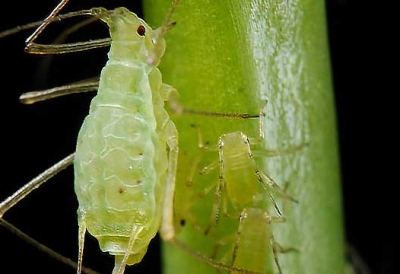Aphids on Shade Trees and Ornamentals
You can find aphids on nearly every type of plant. In some cases the aphids will cause injuries to the plants, including curling the new leaves that form. They’re small insects and there are more 
At Least One Plant for Aphids
Wherever you are, you will usually find that plants have at aphids. Because of so many different types of the creatures, there’s at least one species that will feed on each plant and tree that grows. The majority of the plants will continue to grow perfectly fine, which is why the creatures aren’t usually managed. However, it’s important to keep an eye on your plants, as some species can cause damage and kill your plants. The aphids will feed on the sap from plants. Sap is needed by plants to grow, so if there is a large infestation of the aphids, then the plants can see some leaf curling. There are also times that the shoots and buds will suffer damage.
Sticky Honeydew on the Plants
It’s not always the feeding that causes a problem. The aphids will leave a sticky honeydew behind, which is the pests’ excretion. The leaves and branches are covered, meaning grey mold spores can grew. In some cases the plants just look dull but they can also suffer from a lack of light or air. The honeydew is something bees, flies, and wasps are attracted to. This can lead to the insects further affecting the health of the plants. While some aphids will develop wings, the majority of them will remain wingless. They remain on their host plants for reproduction.
If you are concerned about aphids on your shade trees or ornamentals, give SprayTech a call. We will be happy to help you.

